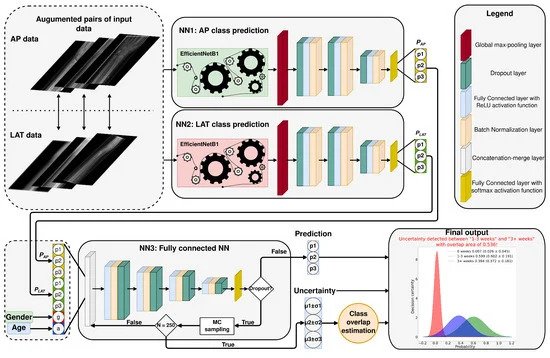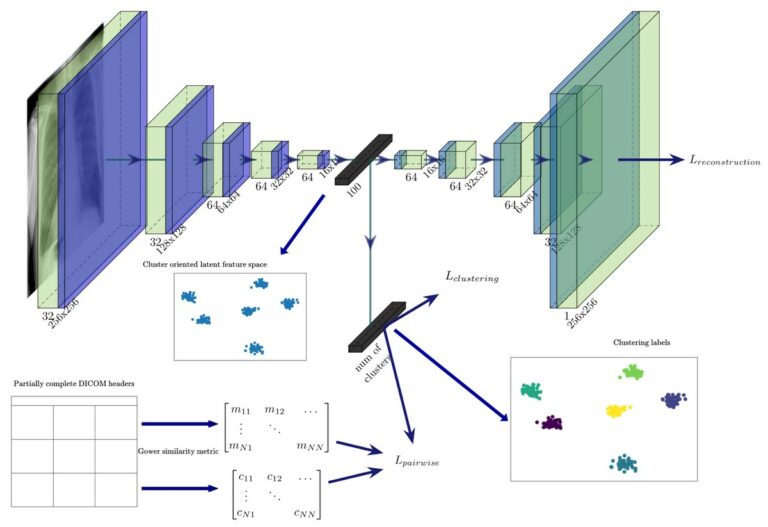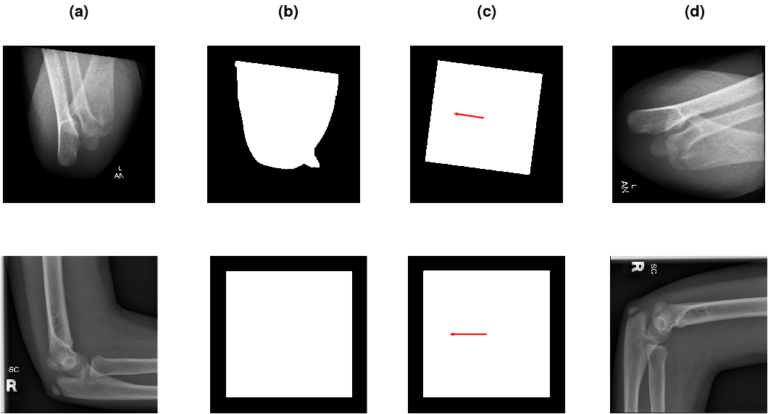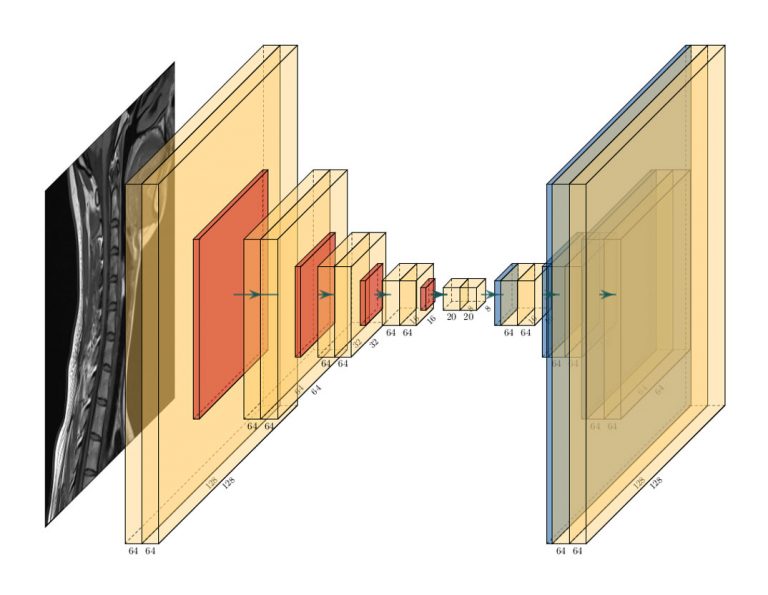Wrist fractures are commonly diagnosed using X-ray imaging, supplemented by magnetic resonance imaging and computed tomography when required. Radiologists can sometimes overlook the fractures because they are difficult to spot. In contrast, some fractures can be easily spotted and only slow down the radiologists because of the reporting systems. We propose a machine learning model […]
Laboratory for Artificial Intelligence in Medicine and Biotechnology
Rapid extraction of skin physiological parameters from hyperspectral images using machine learning
Noninvasive assessment of skin structure using hyperspectral images has been intensively studied in recent years. Due to the high computational cost of the classical methods, such as the inverse Monte Carlo (IMC), much research has been done with the aim of using machine learning (ML) methods to reduce the time required for estimating parameters. This […]
Modeling Uncertainty in Fracture Age Estimation from Pediatric Wrist Radiographs
In clinical practice, fracture age estimation is commonly required, particularly in children with suspected non-accidental injuries. It is usually done by radiologically examining the injured body part and analyzing several indicators of fracture healing such as osteopenia, periosteal reaction, and fracture gap width. However, age-related changes in healing timeframes, inter-individual variabilities in bone density, and […]
Cast suppression in radiographs by generative adversarial networks
Injured extremities commonly need to be immobilized by casts to allow proper healing. We propose a method to suppress cast superimpositions in pediatric wrist radiographs based on the cycle generative adversarial network (CycleGAN) model. We retrospectively reviewed unpaired pediatric wrist radiographs (n = 9672) and sampled them into 2 equal groups, with and without cast. […]
Deep Semi-Supervised Algorithm for Learning Cluster-Oriented Representations of Medical Images Using Partially Observable DICOM Tags and Images
The task of automatically extracting large homogeneous datasets of medical images based on detailed criteria and/or semantic similarity can be challenging because the acquisition and storage of medical images in clinical practice is not fully standardised and can be prone to errors, which are often made unintentionally by medical professionals during manual input. In this […]
XAOM: A method for automatic alignment and orientation of radiographs for computer-aided medical diagnosis
Background and objectives: Computer-aided diagnosis relies on machine learning algorithms that require filtered and preprocessed data as the input. Aligning the image in the desired direction is an additional manual step in post- processing, commonly overlooked due to workload issues. Several state-of-the-art approaches for fracture detection and disease-struck region segmentation benefit from correctly oriented images, […]
Machine Learning for Knowledge Transfer in Medical Radiology
Medical radiology is often used in clinical analysis to establish a medical diagnosis in a non-invasive manner. By considering the morphological properties of the observed area, clinicians can determine the presence of an injury or a disease without the need for invasive surgery. The purpose of computer-aided diagnosis (CAD) is to help physicians with interpreting […]
Automatic Annotation of Narrative Radiology Reports
Narrative texts in electronic health records can be efficiently utilized for building decision support systems in the clinic, only if they are correctly interpreted automatically in accordance with a specified standard. This paper tackles the problem of developing an automated method of labeling free-form radiology reports, as a precursor for building query-capable report databases in […]
Adaptive Filtering and Analysis of EEG Signals in the Time-Frequency Domain Based on the Local Entropy
The brain dynamics in the electroencephalogram (EEG) data are often challenging to interpret, specially when the signal is a combination of desired brain dynamics and noise. Thus, in an EEG signal, anything other than the desired electrical activity, which is produced due to coordinated electrochemical process, can be considered as unwanted or noise. To make […]
Local-Entropy Based Approach for X-Ray Image Segmentation and Fracture Detection
The paper proposes a segmentation and classification technique for fracture detection in X-ray images. This novel rotation-invariant method introduces the concept of local entropy for de-noising and removing tissue from the analysed X-ray images, followed by an improved procedure for image segmentation and the detection of regions of interest. The proposed local Shannon entropy was […]









